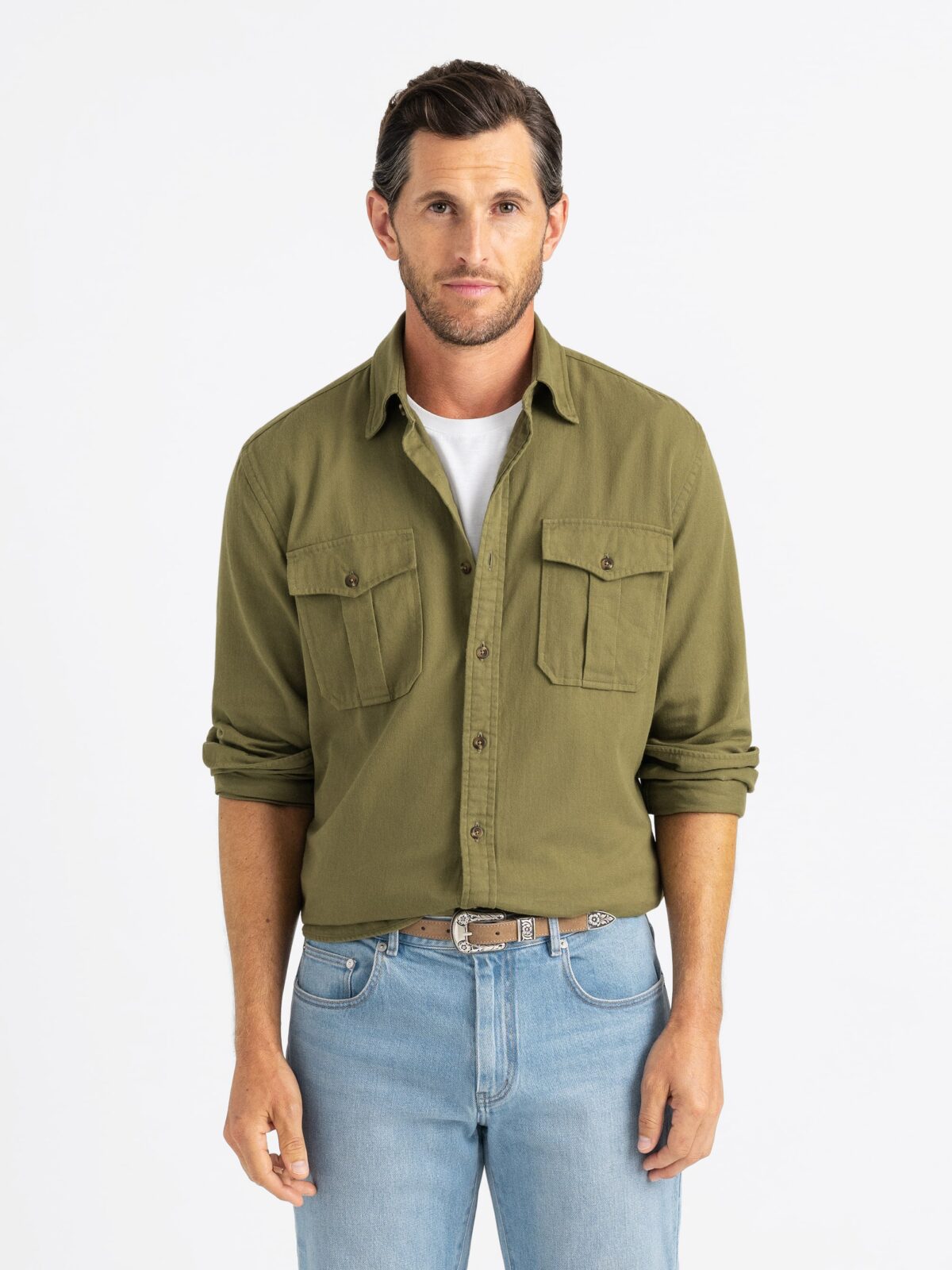
Put This On wouldn’t be possible without the generous support of our sponsors. So, twice a month, we like to give them a special shoutout. Doing so allows us to recognize them for their support and update readers on our sponsors’ special happenings. As we turn the corner and enter a new season, many of our sponsors are stocking up on new things for the cooler months.
If you’re shopping for a shirt today, you mostly have two options. You can get a ready-made shirt from any number of brands, which are typically made in more creative designs and fabrics than what you can find at a tailor’s shop. Alternatively, you can also get a custom shirt from a bespoke or made-to-measure tailor, although they mostly stock the smooth poplins and nubby oxfords that have been standard at offices for over a hundred years.
Proper Cloth is an online made-to-measure shirtmaker that sits at this intersection. They can make you a custom shirt according to the measurements of your body or best-fitting shirt. Since they allow free remakes on first-time orders, you can really home-in on the fit. In addition to the business-ready broadcloths and twills available at other tailoring shops, they also stock a wide range of casual materials. This season, they have low-tension Japanese fabrics with appreciable texture and soft Portuguese flannels in modern designs. They also offer sturdy Japanese selvedge twills, perfect for crafting a two-pocket sport shirt. Nicolas Gabard, founder of the cult label Husbands Paris, once described this style as a “boy scout shirt” and recommended it as a way to dress down tailoring.
You can get almost anything you want at Proper Cloth: washed denim shirts, Western shirts, and even kitten soft Tencel-blend polos. Proper Cloth also has things such as dressier trucker jackets and Western yoke vests that you can wear with their merino-silk crewnecks and five-pocket pants. Wait for the coming fall-winter lookbook soon to be released. Although the company specializes in custom-made clothes, they also do inspiring lookbooks every season.
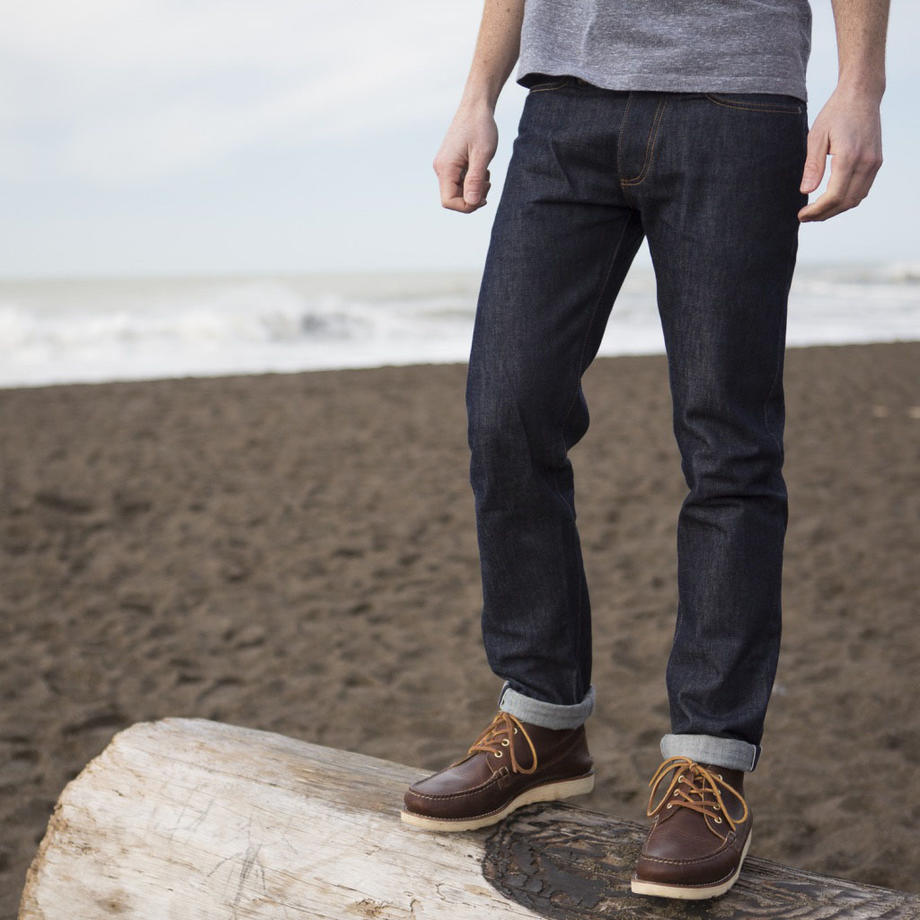
The only thing that can be described as a “wardrobe essential” is a dark worsted suit in a sober color such as navy or grey, which is still required for “serious” occasions such as weddings and funerals. But a good pair of jeans follows closely in second place. Gustin built their reputation on making raw, selvedge denim jeans in the United States and selling them directly to customers at a fraction of what they would normally cost in a store. They’re able to do this because they sell directly online to consumers, cutting out traditional retail channel mark-ups, and organizing all sales through a limited pre-order window. If they’re able to collect enough orders for a project by a certain date, they go into production. The orders are then delivered a few months later. While this means customers have to wait a bit longer to receive their orders, this pre-order system—which reduces waste and unsold inventory—means that you can get things at wholesale prices.
Gustin’s flagship product is their 1968 denim, which is made from Cone Mills selvedge denim and available in the company’s straight, slim, and skinny fits. In the more classic straight leg fit, these are the type of jeans you can wear with field jackets, chore coats, peacoats, and any other type of casual outerwear, along with plaid flannels, sweatshirts or Shetland knits, and rugged work boots. The slightly more adventurous will want to check out the Japanese silk nep, which has a lot more texture (and thus will result in more unique fades). Readers looking for something specifically for the cooler months can also check out the knitwear section, where they have projects for thermals, hoodies, and shawl collar cardigans.
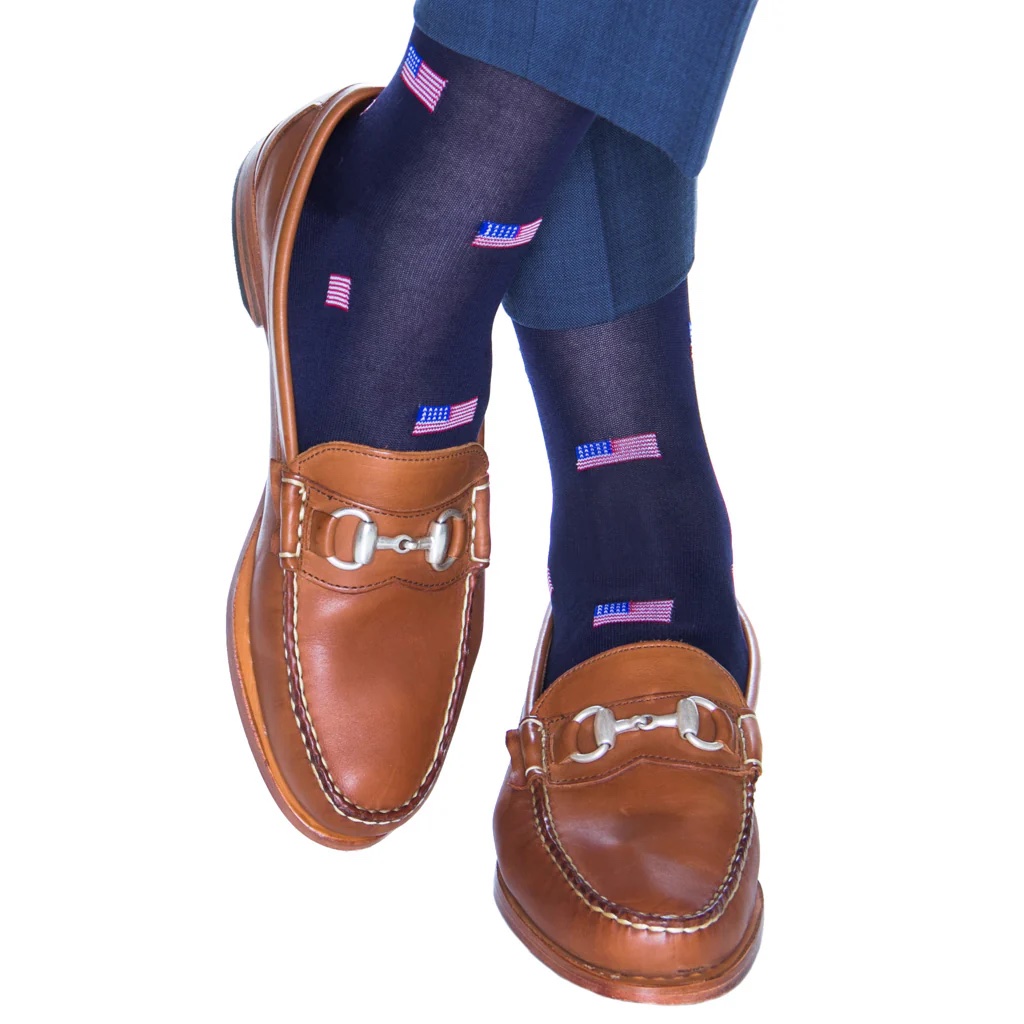
Twenty years ago, buying made-in-USA was all the rage in menswear. Along with supporting domestic workers, it was believed that purchasing things made in the US meant getting more for your money. The popular menswear blog A Continuous Lean even built its reputation on uncovering lesser-known makers producing things stateside.
Since then, the rise of Italian tailoring, streetwear, and now designer clothing has made those discussions a distant memory. Most menswear shoppers—even ones obsessed with US production twenty years ago—rarely look at country-of-origin labels. But even as the trend has passed, Dapper Classics has stuck by their US manufacturing partners without waver. In fact, they’ve even invested machinery into their third-generation, family owned sock-knitting mill based in North Carolina.
Buying MiUSA isn’t always a guarantee of quality, but in this case, you are getting more for your dollar. Dapper Classics’ socks compare well to the best European names, but since they’re not paying for international shipping and duties, they can pass the savings along to you. Their socks are finely knitted using high-end mercerized cotton and merinos yarns, and then hand-linked at the toes for comfort. Years ago, I asked the company’s co-founder, Fred Rich, how he’s able to make patterned socks that somehow don’t fuzz up in the wash. He gave me a technical answer that I’ve never been able to understand, but Dapper Classics socks have held up better in my wardrobe than any other brand I’ve owned.
If you’re just starting to build a better sock wardrobe, start with seven pairs of over-the-calf navy socks (wool for most of the year, and then cotton for the warmest days). Navy socks will pair with anything except black trousers, which require black socks. Supplement with some socks in colors that match your trousers (e.g., tan with tan, grey with grey) and some conservative patterns (e.g., pin dot, herringbone, and grenadine). Thereafter, get what pleases you. Since this is election year, I think Dapper Classics’ USA flag socks are perfect for when you’re canvassing, going to election parties, or casting your vote. The fact that they’re actually made in the USA makes them all the more appropriate.
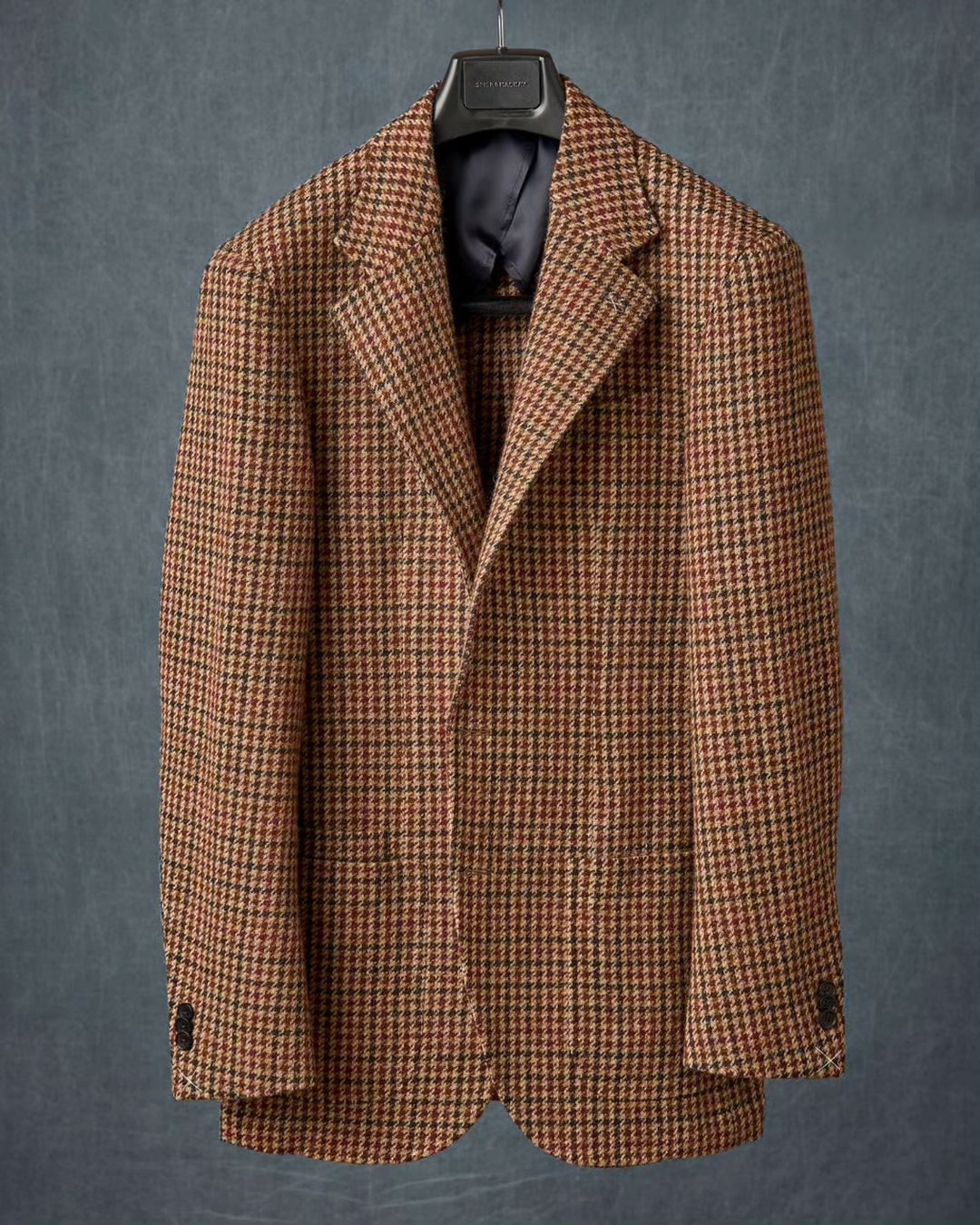
If you’ve ever felt dizzy looking at prices for classic clothing, check out Spier & Mackay. In the last ten years, they’ve built a loyal following by offering clothes that look similar to what you can find at high-end shops but are sold at a fraction of the price. Their tailoring follows many of the standby rules of classic tailoring: a jacket that bifurcates you halfway from the collar to the floor and a lapel that ends halfway from your collar to your shoulder joint. The softer shoulder line draws inspiration from the tailoring styles prevalent in Naples, Italy. Perhaps more importantly, they don’t just carry the same dark worsteds that you can find in every mall, but also more unique forms of tailoring that many menswear nerds can get excited about.
For fall, they have brown flannel double-breasted suits, brown taupe cotton suits, olive corduroy sport coats, and your usual standby tweeds in earthy colors. They also have long, dramatic overcoats that reach down to your knees (good for added warmth and verve), wool-cashmere bombers, and chunky turtlenecks. All of these are much more affordable than their counterparts found elsewhere. For instance, the overcoats, made from Magee tweed, a respectable British mill that supplies some bespoke tailors, cost $600 instead of $1,500+. Spier & Mackay offers free returns for first-time orders, which makes trying out their stuff risk-free.
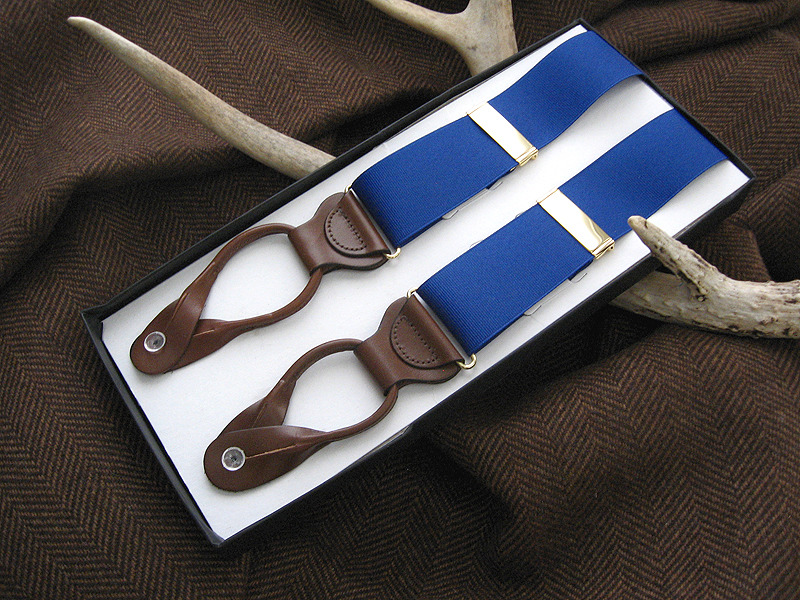
Over the last thirty years, suspenders have gone much in the way of hats. Once common in men’s wardrobes, they’ve become something of a relic of the past. But why might you want to wear suspenders? For one, they’re more comfortable than organ-squeezing tourniquets. Since your waist expands when you sit, and returns to its smaller circumference when you stand, belts are only comfortable in one of these positions. Suspenders, on the other hand, allow you to have a little extra room at the waistband to accommodate these changes. Plus, they’re better at holding up your pants. Belted trousers tend to slip down throughout the day, which requires you to adjust them continually. You can set the desired length with suspenders, put them on, and never bother with them again.
Chipp Neckwear has the most affordable ones around, at least if you’re looking for something well-made and produced in the USA. The price is $45.50, which is lower than their competitors — much like the price of their grenadine ties. They offer 20 solid colors and three stripes, the choice of black or brown leather kips, as well as gold or silver-colored adjusters.
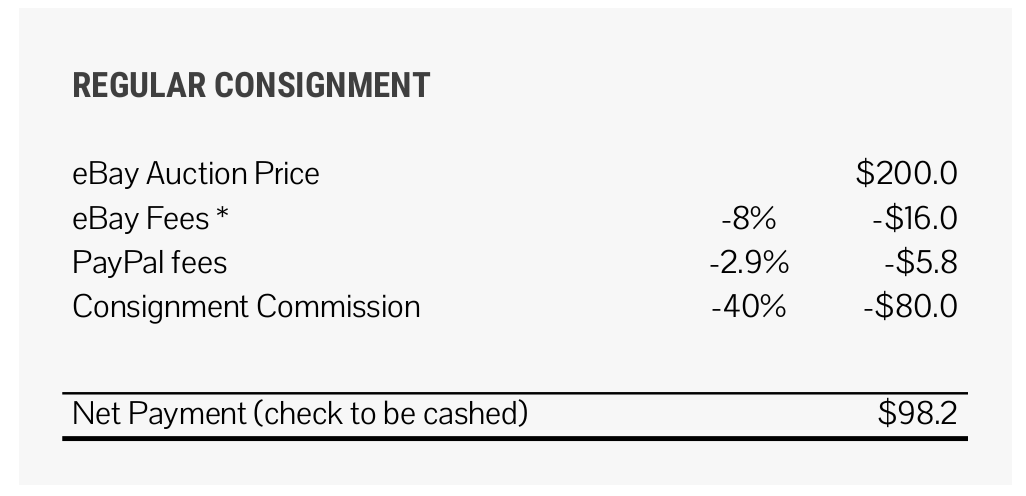

Everybody has items in their wardrobe that haven’t been worn in years—either regrettable purchases, items that no longer fit, or items that are excellent but never made it into rotation. If you want to clear out some room in your wardrobe and make a little extra cash, consider sending this stuff to LuxeSwap. They’re a New York-based operation that has been helping people sell high-end clothing online for over ten years. Matthew, the company’s co-founder, used to mostly sell his thrift finds until he realized he could perform this service for other menswear enthusiasts on StyleForum.
The arrangement is pretty simple: you email them a list of things you’re interested in selling, and they’ll approve what they think they can help you offload. This tends to mean rare vintages and high-end clothes (not mustard stained Old Navy chinos). After receiving approval, pack everything neatly and dispatch it to their Oyster Bay, New York, headquarters. They do all the hard work of taking photos and measurements, creating eBay listings, answering buyers’ questions, and fulfilling orders. After everything has been done, LuxeSwap takes a 40% cut of the profits and reimburses you for the inbound shipping, provided your location is within the continental United States. If you’re willing to take your payment in the form of store credit at No Man Walks Alone or Epaulet, LuxeSwap will reduce their commission to 30%, and the appropriate retailer will top your credit off with an extra 10% (we’ve done some calculations for you above). The result is some extra spending money you can use to acquire cooler clothes you’ll actually wear—and the space to store them.







